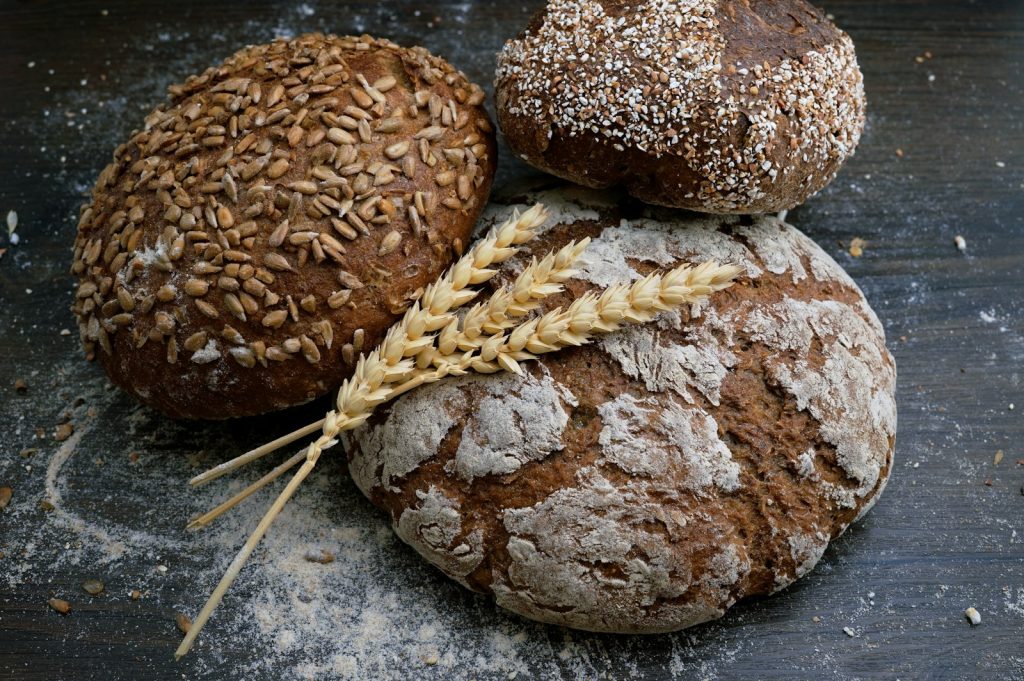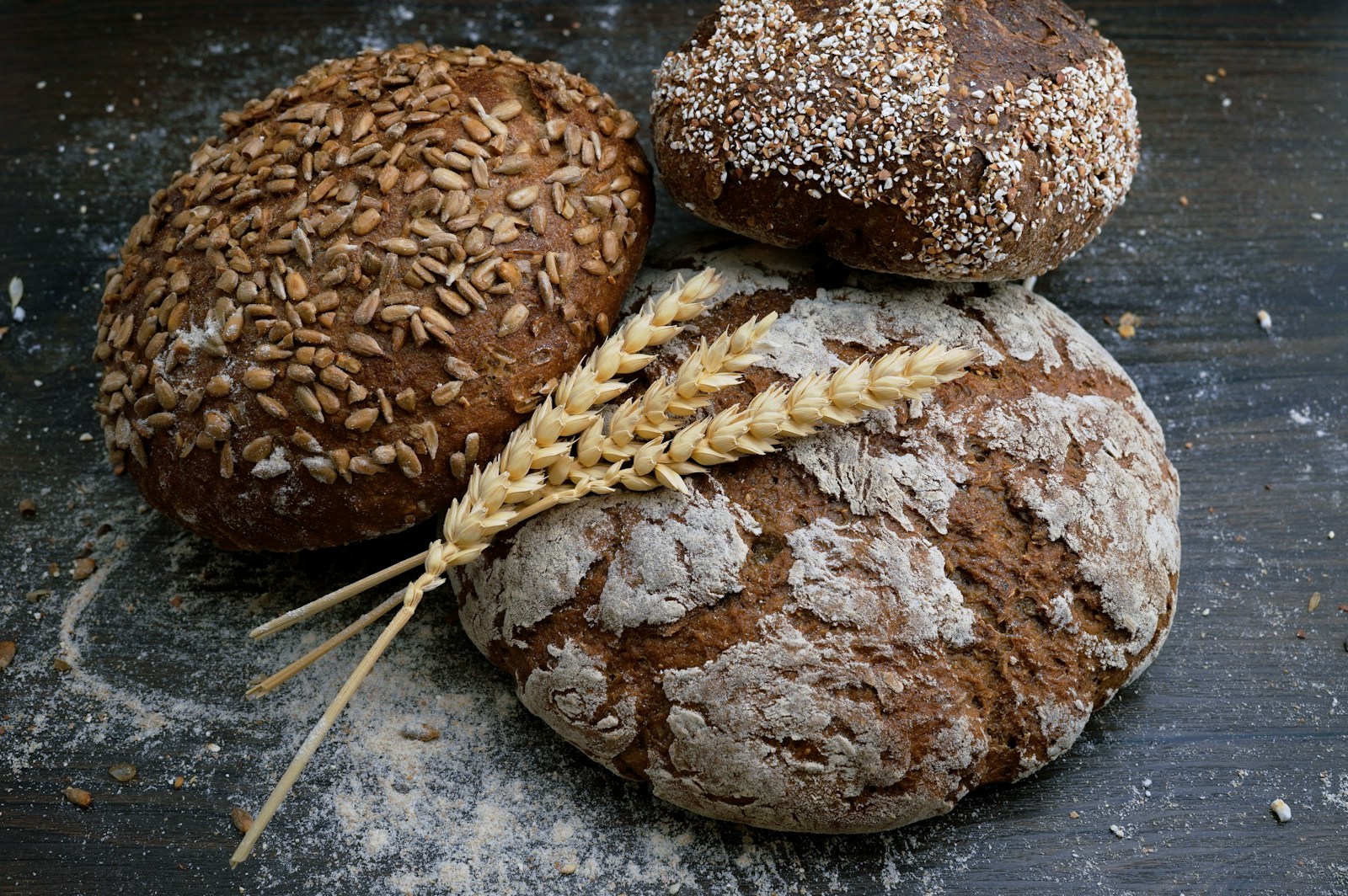
I don’t know who needs to hear this, but bread is basically the backdrop of human history. Like… without it, maybe we’re not even here. That’s not exaggerationthat’s science. And hunger. And maybe also nostalgia for the smell of a fresh loaf in your kitchen.
So, here’s the thing. Someone once wrote a very neat, tidy “definitive timeline of bread.” Dates, milestones, all that jazz. Very textbook-y. But life (and carbs) are messy, so let’s do this differently. Let’s wander through thousands of years of crumbs, burnt crusts, clay ovens, and yessliced bread.
Grab a snack first though. Seriously. Don’t read about bread on an empty stomach. It’s dangerous.
fire: the OG bread tool 🔥
Imagine this. You’re a scrappy little human, 400,000 years ago. Maybe a million years ago? Nobody knows exactly, because archeology is basically detective work with missing pages. But at some point, somebody figures out how to control fire. Not just oops-I-burned-the-savanna fire. Actual “let’s keep it going” fire.
Without fire, no bread. Without bread, no sandwiches. Without sandwiches… well, let’s not even go there.
And I love thinking about that moment. Because before ovens, before toasters, before your fancy air fryerthere’s just a glowing rock pit. And some genius probably slaps some ground-up seeds or roots on a hot stone and boom: proto-flatbread.
30,000 years ago: grinding grain like a boss
Okay, so we’ve been gathering wild grains for like… forever. At least 100,000 years ago. But grinding them? Making paste? That’s a newer party trick. Archeologists found starch residue on stones dating back 30,000 years. Basically the first blenders, minus electricity.
Was it porridge? Was it dough? Was it edible wallpaper paste? No one’s sure. But fast forward to about 14,000 years agoJordan, Middle Eastscientists dig up old fireplaces with literal breadcrumbs. Yes, actual burnt bread bits. Can you imagine the heartbreak? You’re the first person to invent bread and then you burn it. Relatable.
But here’s the big shift: bread is portable. You can carry it around instead of lugging sloshy porridge. Plus, cooked bread unlocks more nutrients, is easier to digest, and let’s be honestit tastes so much better.
agriculture: around 9500 B.C.
This is where things get very “civilization-y.” Someone plants a seed. It grows. Minds blown. Cue religious deities popping up everywheregrain gods, harvest goddesses, mystical stories about wheat. Because, honestly, watching something sprout from dirt still feels like magic. (I tried to grow basil on my windowsill last year and nearly cried when it didn’t immediately die.)
Wheat, barley, rye. Lentils, chickpeas, flax. That was the grocery list of the Levant (Eastern Mediterranean + Middle East). Oh, and pigs were domesticated too, so imagine the first proto-bacon sandwich happening somewhere. History doesn’t record it, but I believe.
And ovens? At first, they were more like barbecue pits. But by 1700 B.C. in Greece, we start seeing little clay ovens in houses. And bakeries. Actual bakeries! The idea that someone baked bread for strangers in exchange for… whatever counted as currency then. Wild.
yeast bread: 1350 B.C. (shoutout to the Egyptians)
This is a big one. Yeast is that magical microorganism that makes bread rise. And Egyptians were the first to party with it.
There’s debate: did bread come first, or beer? (Imagine that being your life’s great mystery. Not “who am I?” or “what’s my purpose?” but “did we chug beer before sourdough?”). Either way, the two were BFFs. Some say bread came from beer foam skimmed into dough. Others say leftover fermenty bread goo got turned into beer. Both sound delicious.
And sourdough was basically the OG yeast bread. They’d save a piece of dough every day, mix it into the next batch. Just like your friend with a mason jar starter who won’t shut up about “hydration ratios.”
Fun fact: the word “bread” might be related to “brew.” Which just makes me want to toast a loaf with a pint.
romans: scaling it up, baby
The Romans, as they do, took bread and made it… bigger. Fancier. A spectacle. A typical Roman bakery could crank out enough bread for 2,000 people daily. Their ovens were like pizza dreams: 20 feet wide, brick-lined, wood-fired. Imagine the smell.
And they got picky about it, too. Light bread for the elites. Darker bread for the poor. Special loaves for soldiers, sailors, maybe even gladiators (though let’s be real, gladiators deserved garlic bread at least).
Later, in medieval Europe, same vibe. Nobles with fluffy white bread, peasants gnawing on heavy rye loaves. Bread even doubled as platescalled trenchers. Basically edible dishware. Zero waste before it was trendy.
random bread glow-ups through history
Let’s pause and do a chaotic list, because history is not neat and I’m not either:
Focaccia: Etruscans, like 6th century B.C. (Northern Italy doing its thing early).
Pretzels: 6th century A.D., made by monks. Twisty, salty, addictive.
Bagels: 1400s, Ashkenazi Jews in Poland. Bless them.
Sandwiches: 18th century, thanks to John Montagu, Earl of Sandwich, who wanted to eat while gambling. Priorities.
Baguette: 1700s Paris, later officially named in 1920. The French really said: make it long.
Sliced bread: 1917 invention, widespread by 1930. Cue the phrase “best thing since sliced bread” (except sometimes it isn’t, because homemade beats Wonder Bread every time).
Texas Toast: 1940s USA. Thick. Buttered. Grilled. Basically bread with a gym membership.
so why does this matter?
Honestly? Bread isn’t just food. It’s memory. It’s ritual. It’s Sunday morning bagels with cream cheese. Grandma’s dinner rolls. That weird sourdough phase we all went through in 2020 (some of us are still in itrespect).
Every culture has some form of bread. Tortillas, naan, pita, injera. You can trace migration, conquest, trade, even love stories through bread. It’s survival and celebration.
Do you ever just smell bread baking and feel instantly calmer? Like someone pressed the reset button on your nervous system? That’s thousands of years of human history in your DNA saying: relax, you’re safe, there’s food.
okay, but my cat just walked across my keyboard
(small tangent, sorry). She doesn’t care about bread history. She cares about sitting directly where I’m typing. But it kinda fits, right? Cats were also worshipped in Egypt, same place yeast bread got big. Coincidence? Probably. But also, cats and carbs = comfort.
final crumbs
Bread is one of those things that’s so ordinary we forget how extraordinary it is. Fire pits to clay ovens to factory slicers. From trenchers soaked in gravy to late-night grilled cheese.
It’s the thing we break together, the metaphor for sharing. “Daily bread.” “Give us this day.” Or just “pass the bread basket, please.”
So yeah. Bread is history. Bread is culture. Bread is love. And now, if you’ll excuse me, I’m going to toast something (probably burn it) and slather on too much butter.
Because honestlywhat’s the point of a bread timeline if you don’t end with a snack?

